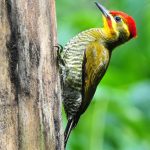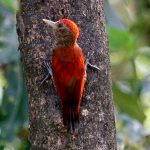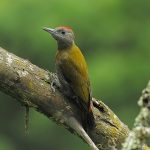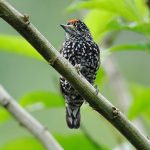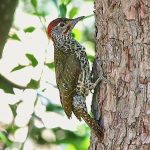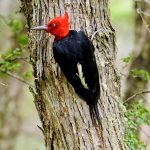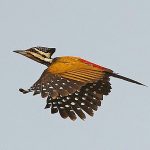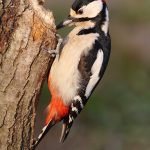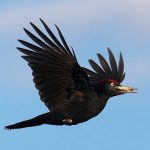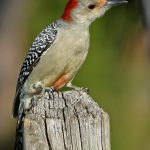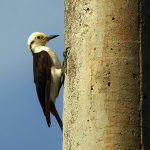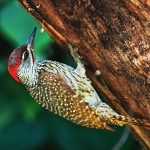Bearded woodpecker

 |
| Photo by José Kemp (PBase) |
Common name:
bearded woodpecker (en); pica-pau-de-bigodes (pt); pic barbu (fr); pico barbudo (es); Namaspecht (de)
Taxonomy:
Order Piciformes
Family Picidae
Range:
This species is found in sub-Saharan Africa, from the Central African Republic and Sudan to Senegal and south to South Africa, only being absent from the dense rainforests of the Congo basin.
Size:
These birds are 25-28 cm long and weigh 67-98 g.
Habitat:
The bearded woodpecker avoids dense forests, typically being found in deciduous woodlands, dry savannas, wooded grasslands and dry scrublands with some large trees. They are present from sea level up to an altitude of 3.000 m.
Diet:
They probe the bark of the trees in search of beetle larvae and pupae, caterpillars, termites, and spiders. They are also known for occasionally hunting lizards.
Breeding:
Bearded woodpeckers can breed all year rounds, varying between different parts of their range. The nest is an oval-shaped hole excavated by both sexes on a large tree, either dead or alive, usually 2-20 m above the ground. There the female lays 2-4 eggs, which are incubated by both sexes for 13 days. The chicks are fed by both parents and fledge around 27 days after hatching, only becoming fully independent 1-2 months later.
Conservation:
IUCN status – LC (Least Concern)
This species has a very large breeding range and is reported to be widespread and locally common but seldom numerous. The population is suspected to be stable in the absence of evidence for any declines or substantial threats.

